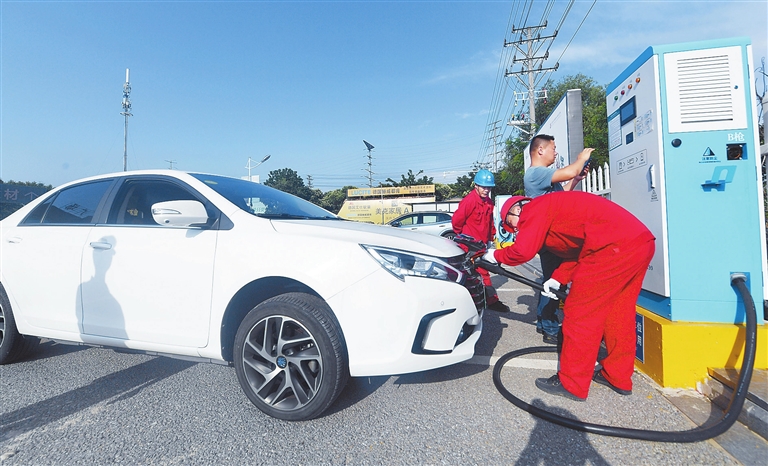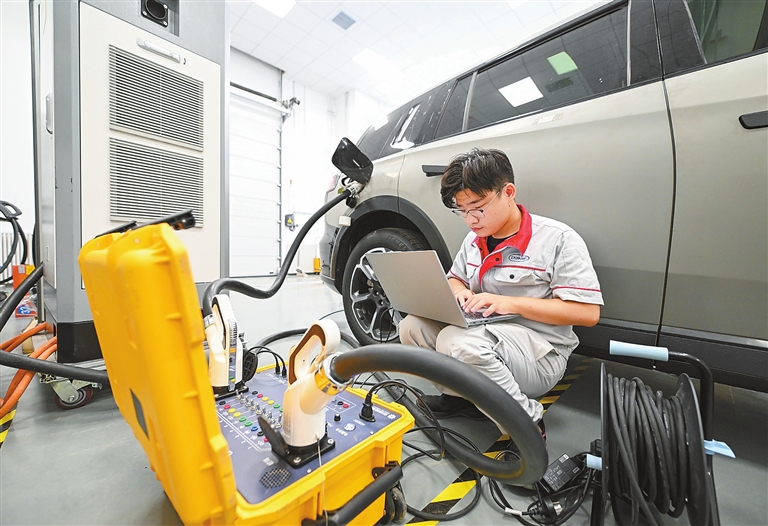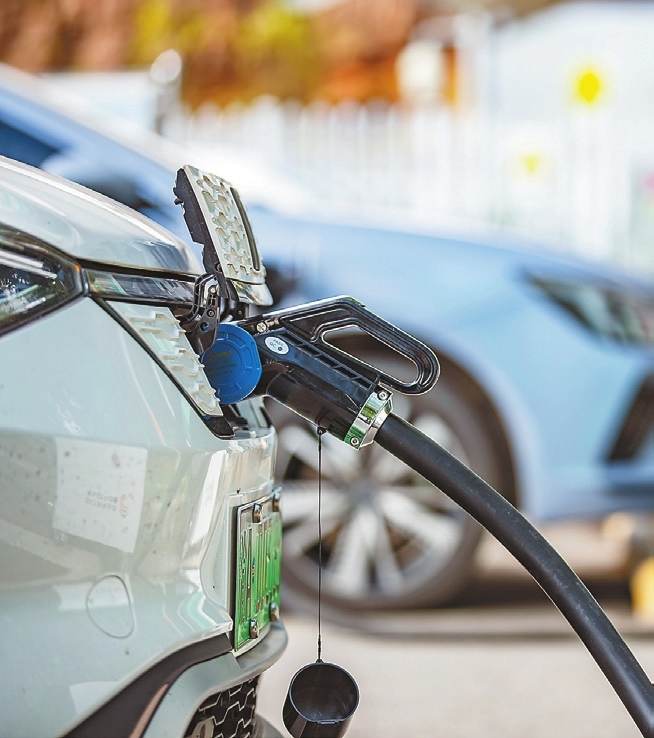


A WHOPPING 340,000 charging piles for new energy vehicles (NEVs) have been installed in South China’s Guangdong Province, reflecting the country’s commitment to boosting green development. The rapidly increasing charging piles in Guangdong, one of China’s economic hubs, have not only met the needs of drivers but also laid a solid infrastructure foundation for the NEV industry. Superfast construction In the provincial capital Guangzhou, a charging pile could be installed in a private parking space within seven days, which is almost as fast as the delivery of new automobiles. “We have launched a service that allows customers to apply for the installation of charging piles the moment they order a new car,” said an official with the power supply department of Guangzhou’s Nansha District, adding that the delivery of vehicles and the installation of charging piles could be completed simultaneously. As of this September, Guangdong had built China’s largest electric vehicle charging network, including 345,126 public charging piles and 19,116 charging stations, according to the China Electric Vehicle Charging Infrastructure Promotion Alliance (EVCIPA). The cumulative number of charging infrastructure facilities nationwide reached about 4.49 million, up 101.9% year on year. Industry insiders believe that the pro-green development stance of the Chinese authorities has driven the rapid expansion of the charging infrastructure. Relevant State departments have proposed to introduce social capital into the building and operation of the charging infrastructure system. Both State-owned and private enterprises can take part in the charging pile market, noted Li Baohua, a professor at the Tsinghua Shenzhen International Graduate School. Fifteen major enterprises, including TLED, Star Charge, State Grid, China Southern Power Grid and Evking, have been active in the construction and operation of charging piles, accounting for 92.9% of the market, according to EVCIPA. Thanks to joint efforts, Guangdong has accelerated the building of an intelligent and safe electric vehicle charging network to meet the needs of NEV owners. Fast charging stations can be found in 96.2% of all expressway service areas in Guangdong. In Guangzhou, charging facilities are required to be fitted for parking spaces in newly-built communities. In Shenzhen, the coverage rate of charging piles is close to 90%. Expanding the NEV charging infrastructure to the corners of the vast countryside is also a great accomplishment. As of this October, all 1,123 townships in Guangdong have been equipped with charging pile facilities. Robust transformation Behind the boom in charging piles in China is the country’s burgeoning NEV industry, which excels in both production and marketing. Data from the China Association of Automobile Manufacturers show that from January to September this year, nearly 4.72 million NEVs were produced and 4.57 million were sold in China. In the same period, China exported 389,000 NEVs, more than doubling the figure year on year. Driven by the increase in NEV export, China’s automobile export stood at nearly 2.12 million units, surpassing that of Germany in the period and becoming the world’s second-largest automobile exporter. Favorable market policies will continue to boost the NEVs market. On Sept. 26, the Ministry of Finance, the State Taxation Administration, and the Ministry of Industry and Information Technology extended the exemption of purchase tax for NEVs to the end of 2023. Many local automobile brands have also decided to forge cooperation with tech enterprises to empower NEVs and charging piles. “This is incredible. My car has been fully charged after I bought a cup of coffee,” said an NEV owner surnamed Jiang, expressing her delight with the charging efficiency in the supercharging and battery swap station built by Guangdong Power Grid Electric Vehicle Industry Service Co., Ltd. The supercharging center adopts a cutting-edge high-voltage charging system. Compared with the existing mainstream fast charging pile, a supercharging pile can increase the charging efficiency by 350%. Flourishing green development Chinese automaker GAC Aion has planned to build 220 charging stations in Guangzhou by the end of this year and increase the number to 1,000 by 2025, according to a GAC Aion official. It also plans to expand the coverage of its superchargers to about 300 cities across the country. “In the first half of this year, China’s market penetration rate of NEVs has exceeded 20%. There is a growing demand for battery recharging,” said Huang Xiangdong, chairman of Guangzhou Greater Bay Technology, a company investing in charging facilities and trying to offer a faster charging experience and reduce site occupancy. Since 2019, Guangdong has been pushing forward major projects such as fast-charging power batteries, distributed intelligent charging, high-power bi-directional onboard chargers, lithium-sulfur batteries and solid-state batteries, with a financial investment of 210 million yuan (around US$29.3 million), which drives a total social investment of 670 million yuan. The coverage of charging infrastructure is expanding, and so is the capacity to ensure charging services. Guangdong Power Grid Corporation is expected to invest more than 4 billion yuan in the province during the 14th Five-Year Plan period (2021-2025) to accelerate the construction of charging infrastructure, and put another 40,000 charging piles into operation, according to an official with the company. It will also promote the construction of charging facilities in residential communities and improve the charging network along highways, to further ease the range anxiety of NEV owners. “From rapidly growing NEVs to the extensive layout of charging piles, the industry chain of NEVs is full of vitality, injecting ‘green energy’ into China’s economic transformation and upgrading,” Li Baohua said. (Xinhua) | 
